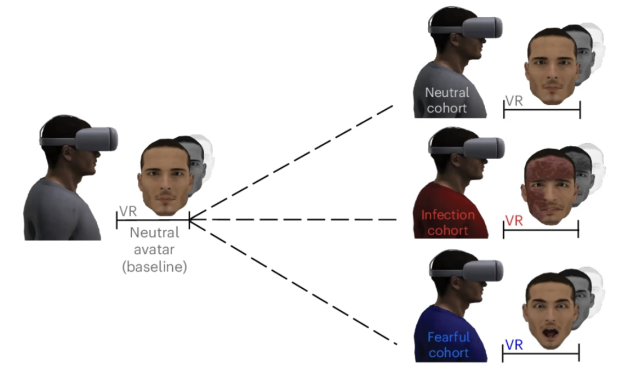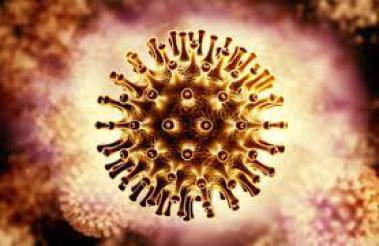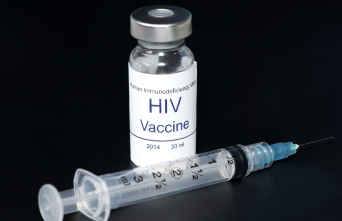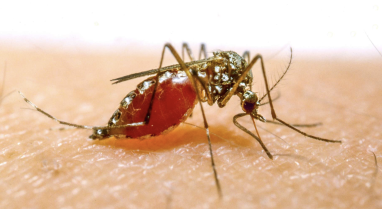
https://www.nature.com/articles/s41593-025-02008-y
Voir un avatar malade en réalité virtuelle déclenche le système immunitaire. Les chercheurs ont exposé des volontaires, par réalité virtuelle, à des avatars "infectieux" présentant des symptômes visibles de la maladie (boutons, toux...) et à titre de comparaison, à d'autres à l'air apeuré ou arborant une expression neutre. Tout au long de l'expérience, l'activité cérébrale des participants a été enregistrée. Devant les "avatars infectieux", les participants voyaient leur taux de cellules immunitaires augmenter dans le sang, à des niveaux comparables à ceux observés après un vaccin. Dans leur cerveau, un réseau d'aires, "l'espace péripersonnel", chargé de surveiller la distance à laquelle les autres personnes s'approchent de nous, s'activait. Ainsi, notre cerveau, en voyant des individus potentiellement malades, focalise sa zone de vigilance. De plus, un autre réseau "réseau de saillance" dont le rôle est de détecter les menaces présentes dans notre environnement, se met lui aussi en alerte. Puis, ces deux circuits cérébraux donnent l'alerte contre les microbes en alarmant l'hypothalamus, le centre de la régulation des hormones, capable de lancer une grande opération immunitaire. (Pour la Science) 07/25
https://www.nature.com/articles/s41591-023-02213-x
A third patient announced as probably healed from the HIV. 02/23
The only possible treatment is if the HIV-positive person has also leukemia requiring a bone marrow graft, as the cells destroyed before receiving the graft are also those carrying the virus. And a
further special feature: in addition to being compatible, the donors selected were carriers of a very rare mutation: the delta 32 mutation, which
prevents HIV from entering human cells (CCR5 receptor).
It is therefore a very heavy treatment, with a multitude of side effects, aimed above all at curing leukemia. That's why there have only been 3 official cures. Scientists are cautious, as always, and
talk about a "very probable" cure. Indeed, it would be necessary to check over the presence of the virus in each of his cells, which is impossible.
Un troisième patient annoncé probablement guéri du VIH.
Le traitement possible que dans un seul et unique cas est que la personne portant le VIH est atteinte d’une leucémie nécessitant une greffe de moelle osseuse, car les cellules détruites pour
faire place à la greffe sont aussi celles qui portent le virus. Et particularité supplémentaire : les donneurs sélectionnés en plus d’être compatibles étaient porteurs d’une mutation très rare : la
mutation delta 32, qui empêche le VIH d’entrer dans les cellules humaines.
C’est donc un traitement très lourd, avec une multitude d’effets secondaires, qui vise avant tout à soigner la leucémie. C’est pourquoi on ne compte que 3 guérisons officielles. Les scientifiques
sont prudents, comme toujours et parlent d’une guérison “très probable”, car pour pouvoir affirmer sans aucun doute que le patient est guéri, il faudrait vérifier la présence de virus dans chacune de
ses cellules, ce qui est impossible.
https://www.youtube.com/watch?v=c4iC1iD74VY 03/22
Moderna has just administered the first dose of an HIV mRNA vaccine (2nd trial) to a participant. Different formulations containing messenger RNA encoding HIV envelope proteins will be tested. These proteins are identified as targets for neutralizing antibodies. These tests will show whether injecting this mRNA vaccine intramuscularly stimulates the immune system sufficiently (also see the vaccine's side effects). The trial is expected to recruit around 100 HIV-negative people aged between 18 and 55. Today, it is estimated that 38 million people worldwide are infected with HIV (Human Immunodeficiency Virus), a quarter of whom are unaware of it. According to UNAIDS, 630,000 people will have died of AIDS in 2023 (compared with 1.5 million victims a year 10 years ago). To be continued...
Moderna vient d'administrer la première dose à un participant pour un vaccin à ARNm contre le virus VIH (2ème essai). Différentes formules contenant un ARN messager codant pour des protéines d'enveloppe du virus VIH vont être testées. Ces protéines ont été identifiées comme étant la cible d'anticorps neutralisants. Ces tests vont permettre de voir si l'injection de ce vaccin à ARNm en intramusculaire stimule suffisamment le système immunitaire (aussi voir les effets secondaires du vaccin). L'essai devrait recruter environ 100 personnes séronégatives de 18 à 55 ans. Aujourd'hui on considère que 38 millions de personnes sont infectées par le VIH (Virus d'Immunodéficience Humaine) dans le monde, dont un quart sans le savoir. D'après l'ONUSIDA, 630 000 personnes sont décédées de la maladie du SIDA en 2023 (contre 1.5 million de victimes par an il y a 10 ans). Affaire à suivre...
https://investors.modernatx.com/news/news-details/2022/Moderna-Announces-First-Participant-Dosed-in-Phase-1-Study-of-its-HIV-Trimer-mRNA-Vaccine/default.aspx
https://clinicaltrials.gov/ct2/show/NCT05001373
A 77% effective malaria vaccine developed by Oxford University in collaboration with Burkinabe scientists. Called R21/Matrix-M, it is a vaccine made up of a recombinant protein specific to the most widespread and aggressive species of Plamodium falciparum parasite (the R21 circumsporozoite protein) and an adjuvant, Matrix-M. Phase II clinical trials were carried out on 450 children in Burkina Faso, aged between 5 and 17. Two adjuvant concentrations were tested, the higher achieving 77% efficacy in preventing the onset of malaria, and the lower, 71% after 3 doses and a one-year follow-up. A booster dose was administered just before the peak of infection, during the rainy season.
Un vaccin contre le paludisme efficace à 77% développé par l'Université d'Oxford, en collaboration avec des scientifiques burkinabés. Baptisé R21/Matrix-M, c'est un vaccin composé d'une protéine recombinante spécifique au parasite Plamodium falciparum espèce la plus répandue et la plus agressive (la protéine circumsporozoite R21) et d'un adjuvant, le Matrix-M. Des essais cliniques de phase II ont été menés auprès de 450 enfants du Burkina Faso, âgés de 5 à 17 ans. Deux concentrations d'adjuvant ont été testées, la plus élevée a permis d'atteindre une efficacité de 77% pour éviter l'apparition du paludisme, et la plus faible, 71 % après 3 doses et à l'issue d'un suivi d'un an. Un rappel a été fait juste avant le pic d'infection, durant la saison des pluies. 04/21
https://papers.ssrn.com/sol3/papers.cfm?abstract_id=3830681
Vidéo à VOIR:
https://www.youtube.com/watch?v=ZbBhUIgrM-o
Une étude montre que le parasite du paludisme a une prédilection pour la rate. Cette étude est un "Human challenge trials" ou "modèle d'infection expérimentale chez l'humain". Pour mieux enquêter sur les différentes voies d'infection, des chercheurs australiens ont infecté 7 participants avec Plasmodium falciparum et Plasmodium vivax. Les participants ont subi de l'imagerie ar TEP et par IRM, 7 jours avant l'infection puis 7 à 11 jours après, avant d'être soignés. Les chercheurs ont observé le foie, la moelle osseuse et la rate. Très rapidement après l'infection, ils ont découvert une augmentation du métabolisme du glucose dans la rate, ce qui signifie que les parasites peuvent s'accumuler dans la rate peu de temps après l'infection. La rate joue un rôle dans l'immunité et le renouvellement des cellules sanguines. 05/21
https://journals.plos.org/plosmedicine/article?id=10.1371/journal.pmed.1003567



